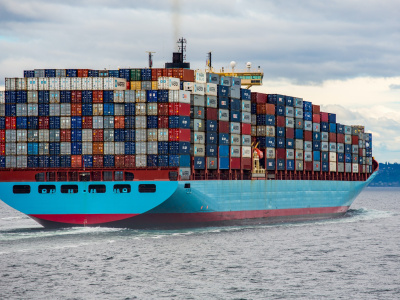
African Regional Cooperation: Lessons from Deep Integration?
This year’s World Trade report takes a close look at Preferential Trade Agreements (PTAs), and analyses their relation to the multilateral trading system. This article highlights the parts of the report focusing on the trends towards regional integration and cooperation in Africa. The main finding of the report is that the recent trend of PTAs addressing deep, ‘behind the border’ issues might provide a helpful blueprint to address the shortcomings of the ‘linear’ model of integration followed on the African continent.
PTAs and ‘deep’ liberalization
Most recent PTAs go beyond traditional tariff-cutting exercises and may include such policy areas as services trade, investment, intellectual property, technical barriers to trade and dispute settlement. For instance, about one- third of PTAs in force today contain services commitments compared to less than a tenth in 1990.
Trade agreements that mostly deal with border measures are often defined as “shallow” agreements. In contrast, preferential agreements that include rules on other domestic policies are referred to as “deep” agreements. Two distinct dimensions of deep integration are the “extensive” and the “intensive” margin. The extensive margin refers to an increase in the policy areas covered by an agreement, while the intensive margin refers to the institutional depth of the agreement. The extensive and intensive dimensions of deep agreements may be related, as an extension of the coverage of an agreement may require the creation of common institutions for its proper functioning.
Deep arrangements may be necessary to promote trade in certain sectors and economic integration more broadly. For instance, harmonization or mutual recognition of certain regulations may be a pre- requisite for trade in services, or competition policy rules may be required to allow comparative advantage to materialize.
Deep integration lowers trade costs and provides shared benefits, such as common rules and a stable monetary system that the market or national governments fail to offer. However, no unifying analysis is possible of the economic effects of deep integration, as these effects depend on the specific form that arrangements take. Deep integration with advanced economies may create advantages for developing countries from importing best-practice institutions. However, costs may be involved if the common rules are distant from national preferences and the needs of developing countries.
The continuous expansion of production sharing between developed and developing countries requires deeper agreements to fill the governance gap between countries. An agreement such as the North American Free Trade Agreement, for example, includes disciplines going beyond preferential tariffs that are required to facilitate production sharing between the United States and Mexico. In Europe the Euro- Mediterranean agreements fulfil the same objective.
African regionalism: the linear model?
Not all PTAs are prompted by international production networks and the trend towards deep integration. African regional cooperation is a case in point. Understanding the political and historical context in which African PTAs emerged is key in this regard.
The geopolitical configuration of Africa has been largely determined by the political forces of colonialism. The borders of African countries demarcated the colonies of the European powers, not the emergence of nation states in Africa. A fragmented continent is the result, with small markets, small economies, and a large number of landlocked countries significantly limiting development options. Fragmentation is associated with the lack of economies of scale in the production and distribution of goods and services and the impact of scale on the cost of public goods. In the early years of independence, attention focused strongly on the need to overcome the problems of scale and fragmentation. Continental economic and political unification was accepted as a rational response in order to create a larger economic space for industrialization and economic development.
This was an era of economic planning, and Africa’s leadership believed that economic planning would be more practicable at a regional, and ultimately continental, level. Underpinning this policy approach was the conviction that the path to development would be industrialization, and diversification away from reliance on primary commodity production. The industrialization-regional integration links were clear.
The South African Development Community’s (SADC) market integration agenda and is a good example of a linear model of progressive integration in Africa. Although the SADC Treaty (and subsequently the SADC Trade Protocol) does not articulate a detailed plan for integration, the detail was provided in the Regional Indicative Strategic Development Plan of 2003. This strategic plan provides for the establishment of a free trade area by 2008, a customs union in 2010, a common market in 2015, monetary union in 2016 and the introduction of a single currency in 2018.(1) This approach was also adopted by the East African Community (EAC), established in 1999 and also by ECOWAS in West Africa. Progress in ECOWAS to establish a free trade area has been very slow and the customs union is still work in progress.
The SADC roadmap and the EAC integration plan reflect the general trend in Africa to adopt a linear model of progressive regional integration, characterized by ambitious targets. Of 14 regional economic communities that existed in 2001, nine have a full economic union as the specified objective, one aims to become a common market (COMESA), one is an established customs union (the South African Customs Union) with no plans to move beyond this, while the remaining three aim for intra-regional free trade or regional cooperation. These agendas share the aim of transforming the African economic landscape and establishing “a strong united bloc of nations” over a period of just more than three decades.
Deep integration as an alternative to the linear model?(2)
African regional integration focuses primarily on reducing barriers to trade in goods, but deep integration may nevertheless hold some useful lessons that can increase the returns from the process of African integration.
Trade in services, for example, becomes a feature of the regional integration model when the common market stage is reached, but to date services have received very little attention in formal African integration arrangements. This is also true of forays by African countries into preferential trade agreements with external partners. The inclusion of services (and also other behind-the-border issues, such as investment, competition policy and government procurement) has proven contentious.
Africa’s regional integration initiatives have achieved limited results, raising doubts about the approach adopted to addressing factors that inhibit regional trade. Barriers to trade that raise the costs of doing business can be classified as border or behind-the-border measures. African regional free trade arrangements have focused on border measures, and primarily on tariffs. Tariffs are undeniably an important barrier but they may not be the most important one.
Abundant anecdotal evidence suggests that time- consuming and inefficient border procedures may be more important than tariffs in inhibiting intra-regional trade. Multiple border crossings for goods to reach land- locked countries add significantly to the transaction costs of intra-regional trade. Many other constraints besides border barriers increase the transaction costs of trade.
Geography is an important consideration. Given the limited availability of navigable inland waterways and the cheap transport this allows, the logistical costs of trade in goods are high. This is exacerbated by poorly developed transport systems, characterized by low per capita densities of rail and road transport infrastructure, which in colonial times was designed to transport primary products to port. Poorly developed cross-country road, air and rail connections are the outcome.(3)
Transport costs in Africa are still among the world’s highest. For example, shipping a car from Japan to Abidjan costs US$ 1,500 whereas the comparable cost for transporting the same car from Addis Ababa to Abidjan would be US$ 5,000.(4) Both infrastructural and regulatory forces are at work. Overall, the high cost and unreliability of transport services contribute to a business environment in which firms are forced to keep higher levels of inventories, ruling out the possibility of adopting cost-saving management systems for “just in time” production.(5)
The lack of skills and capital to establish and operate modern communication systems, combined with small business communities that do not allow financially viable business publications, mean that business news and information required for informed decision-making is another important constraint.(6) Fixed-line telephone services are limited and unreliable, with high call charges, especially for international calls. In most African economies the provision of fixed-line phone services is still the exclusive preserve of public monopolies. Business contracts require information on comparative prices and depend on reliable, fast and low-cost access to market information. Information is essential to efficient market outcomes, and a lack of readily available information at reasonable cost will raise trade transaction costs. Although these barriers also constrain trade with the rest of the world, their impact on intra-regional trade is particularly important.
The barriers discussed so far feature strongly on the demand side of intra-regional trade. These demand- side factors, however, may arguably be much less important than the weak supply-side capacity of African economies. Indeed, it may be argued that the real problem facing African economies is not market access (border constraints) but rather the capacity to produce tradable products competitively.
Expanding market access by lowering the transaction costs of trade is necessary, but will not guarantee economic growth and development. Enhanced market access without the capacity to produce goods and services to benefit from those opportunities will fail to produce higher economic growth. Effective supply- side capacity depends on sound macroeconomic and microeconomic policies, good governance, well- developed institutional capacities, adequate infrastructure and a sound business environment capable of attracting investment.
Addressing supply side constraints through deep integration
Supply-side constraints to efficient production could be partly addressed by a deep regional integration agenda. No single, ready-made recipe exists for effective deep regional integration. Among the factors relevant to Africa are integration of services markets, trade facilitation, improved market intelligence, dispute settlement mechanisms, revenue systems less dependent on trade taxes, funding for cross-border infrastructure, and financing for regional institutions.(7)
Development partners and international institutions could assist this process by recognizing that the emergence of regional groupings is relevant to the planning and implementation of development assistance. The WTO, for its part, is progressively regionalizing its Trade Policy Reviews and is now encouraging the regionalization of Aid for Trade, which aims to help developing countries develop the trade- related skills and infrastructure needed to implement and benefit from trade agreements and to expand their trade.
This year’s World Trade Report is available on the WTO website, at www.wto.org
Footnotes
1. The free trade agreement adopted in 2008 has not yet been fully implemented and at a ministerial task force meeting in March 2010 it was decided to postpone the establishment of the customs union, without committing to a specific deadline
2. This discussion is based on Hartzenberg (2011).
3. McCord, G., Sachs, J. D. and Wing, T. W. (2005), “Understanding African poverty: beyond the Washington Consensus to the Millennium Development Goals approach”, Africa in the World Economy – The National, Regional and International Challenges, The Hague: FONDAD.
4. Economic Commission for Africa (2004) Assessing Regional Integration in Africa, Addis Ababa: Economic Commission for Africa.
5. Collier, P. (2000), “Africa's comparative advantage”, in Jalilian, H., Tribe, M., and Weiss, J. (eds), Industrial Development and Policy in Africa – Issues of De-Industrialisation and Development Strategy, Cheltenham, UK: Edward Elgar: 11-21.
6. Collier and Venables (2008) make the point that large societies can be better informed than small societies because of the existence of scale economies in the commercial media. They mention that in Africa only “South Africa comes anywhere close to providing a market in which specialist journals are viable”.
7. Lamy, P. (2010), “Regional integration in Africa: ambitions and vicissitudes”, Address to the conference organized by Institut Aspen France at Annecy on 28 August 2010. Available at: http://www.notre-europe.eu/uploads/tx_publication/ PolicyPaper_43_Lamy_02.pdf. Accessed on 27 May 2011.
This article was published in GREAT Insights Volume 1, Issue 1




